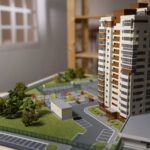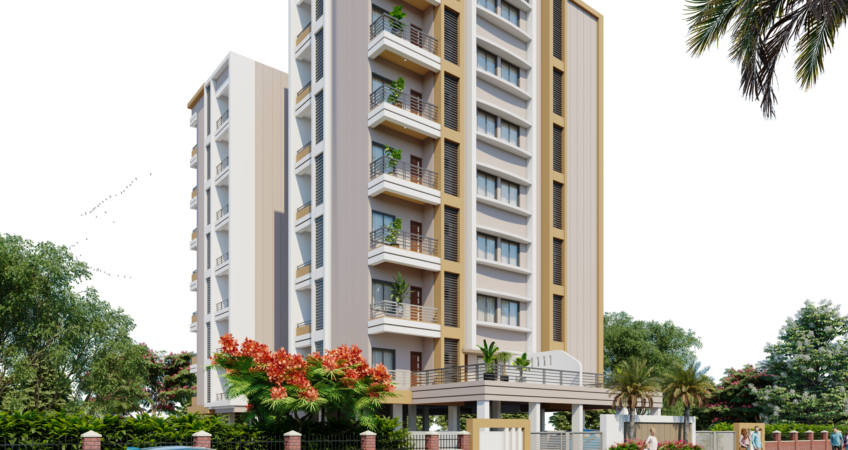In the realm of real estate development, the pursuit of affordable housing solutions remains a pressing challenge. As urban populations swell and housing costs escalate, the need for innovative approaches to residential development becomes increasingly apparent. This article delves into the concept of developing flats instead of plots as an innovative solution to the issue of affordable residential homes. From shared ownership schemes to modular construction, we’ll explore various strategies aimed at making housing more accessible to a wider range of individuals and families.
I. Introduction to the Need for Affordable Residential Homes
Affordable housing has increasingly become a pressing issue as the demand for accessible residential options continues to rise. Low-income families face numerous challenges in securing suitable accommodation, highlighting the crucial need for affordable housing solutions.

A. Rising Demand for Affordable Housing
In urban areas, the gap between housing supply and demand has widened, leading to soaring property prices and rental rates. This trend disproportionately affects low-income families, making it difficult for them to find affordable homes.
B. Challenges Faced by Low-Income Families
Limited financial resources often constrain low-income families, forcing them to compromise on the quality and location of their housing. This compromises their overall well-being and access to essential services, perpetuating the cycle of poverty.
C. Importance of Accessible Housing Options
Accessible housing options are essential for fostering inclusive communities and supporting the growth and development of individuals. By addressing the housing needs of vulnerable populations, society can work towards creating a more equitable and sustainable future.
II. The Shift towards Flat Developments

To address the need for affordable housing, there has been a noticeable shift towards developing flats as a cost-effective and efficient solution. Flat developments offer various benefits that make them a viable option for providing accessible housing.
A. Cost-Effective Construction Methods
Flat constructions often utilize efficient building materials and construction methods, reducing overall costs without compromising quality. This cost-effectiveness allows developers to offer affordable housing options to low-income families.
B. Maximizing Land Use Efficiency
Multi-story housing structures, such as flats, maximize land use efficiency by accommodating more residents within a smaller footprint. This approach optimizes space in urban areas where land availability is limited, making it a sustainable solution for housing development.
C. Benefits of Multi-Story Housing Structures
Apart from maximizing land use, multi-story housing structures promote community living, encourage social interactions, and provide shared amenities that enhance residents’ quality of life. These benefits contribute to creating vibrant and cohesive neighborhoods.
III. Innovative Design Features of Affordable Flats
Innovative design features play a crucial role in making affordable flats attractive, functional, and sustainable. By incorporating creative solutions, developers can create spaces that are both affordable and desirable for residents.

A. Efficient Space Utilization
Designing flats that prioritize efficient space utilization can enhance the living experience for residents. Functional layouts, smart storage solutions, and multi-purpose areas maximize the utility of limited space, creating comfortable living environments.
B. Sustainable Building Materials
Using sustainable building materials not only reduces the environmental impact of construction but also contributes to long-term cost savings for residents. Energy-efficient design elements, renewable materials, and green building practices make affordable flats more eco-friendly and affordable.
C. Creative Community Spaces
Inclusive community spaces within flat developments foster a sense of belonging and social cohesion among residents. Shared amenities, green spaces, and recreational facilities promote interactions, create a sense of community, and improve overall well-being.
IV. Impact of Flat Development on Urban Landscapes
Flat developments have a significant impact on urban landscapes, addressing challenges related to urbanization, promoting inclusivity, and enhancing the aesthetic appeal of city skylines.

A. Addressing Urbanization Challenges
In rapidly urbanizing areas, flat developments offer a practical solution to accommodate growing populations without sprawling horizontally. Vertical housing structures optimize urban space, reduce commute times, and ease pressure on infrastructure.
B. Promoting Inclusive Neighborhoods
The integration of affordable flats into diverse neighborhoods promotes social inclusion and diversity. By mixing different income groups within the same community, flat developments create opportunities for interaction, mutual support, and shared experiences.
C. Enhancing City Skylines
Architecturally appealing flat developments can enhance the visual appeal of city skylines, contributing to the overall urban aesthetics. Well-designed housing projects add character, vibrancy, and identity to city landscapes, making them more livable and attractive.
V. Policies and Initiatives Supporting Flat Development for Affordable Housing
Government subsidies, public-private partnerships, and community engagement play a vital role in supporting flat development initiatives for affordable housing, making them financially feasible and socially sustainable.
A. Government Subsidies and Incentives
Governments often provide subsidies, tax breaks, and other financial incentives to encourage the development of affordable housing projects. These measures help offset construction costs, making affordable flats more accessible to low-income families.
B. Public-Private Partnerships
Collaboration between the public and private sectors allows for the efficient mobilization of resources, expertise, and funding needed to develop affordable flat projects. Public-private partnerships create synergies that benefit both developers and communities.
C. Community Engagement in Housing Projects
Engaging local communities in the planning and development of affordable housing projects fosters a sense of ownership, empowerment, and social responsibility. Community input ensures that housing initiatives meet the specific needs and preferences of residents, creating more sustainable and inclusive neighborhoods.
Conclusion and Summary

In conclusion, transforming affordable housing through the development of flats presents a promising solution to address the growing need for accessible residential options. By prioritizing cost-effective construction methods, innovative design features, and community engagement, we can create sustainable and inclusive living spaces for all.

